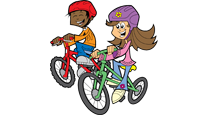Children face a higher risk for head injury when engaging in certain activities such as playing sports, recreational activities and even during vehicular accidents. It is important to note that these injuries can be severe, resulting to lasting brain damage and death if it is severe enough. A child who sustained a head injury might not develop any symptoms that can indicate a serious head injury until hours after. It is important to seek medical care for a head injury in order to rule out other serious health issues. Emergency medical care must be sought if the individual is bleeding, has breathing difficulties and loses consciousness.
What are the external injury symptoms?
When it comes to an external head injury, it does not involve the internal skull or brain. It is important to note that the scalp is involved and damaged. The symptoms of a head injury are usually apparent. If the child struck his/her head, it can result to bruising at the area of impact or bleeding if the skin has been broken. The bleeding can be substantial since the scalp is comprised of several blood vessels and tends to bleed in a profuse manner. In most cases, a contusion can develop or swell under the skin. You can learn more about head injuries by enrolling in first aid class.

The child who sustained a mild external head injury might not suffer symptoms beyond swelling, pain or bruising. It is recommended that any child with a head injury should be closely monitored for 24 hours for additional symptoms that might arise. If the symptoms start to progress, it can indicate a severe head injury such as internal head injury or concussion.
Symptoms of internal injury
The brain is protected by fluid within the skull but if a direct blow to the head is delivered, it can damage the brain tissue and blood vessels. There are various symptoms that can develop if the child experiences an internal head injury. The bleeding within the brain is severe and occurs once the blood vessels within the head ends up broken during injury.
The child can suffer from bleeding or drainage of clear fluid from the nose, ears or mouth right after injury. Other symptoms include speech and balance problems, falling easily and unable to bear weight can indicate brain injury. The pupils will also vary in size as well as difficulty focusing visually or have blurry vision.
The child with an internal head injury can lose consciousness even if he/she has been awake or alert right after the injury. The symptoms of head injury can develop at a slow phase, oftentimes days after the injury. It is vital to carefully monitor the child and medical attention must be sought if any symptoms develop.
What is a concussion?
Concussion is basically a closed head injury or internal injury that has classic symptoms. Take note that a concussion involves bruising on the brain which takes place once the brain bounces within the skull during injury. The symptoms include visual disturbances, dizziness, headache, nausea, vomiting and fatigue.
